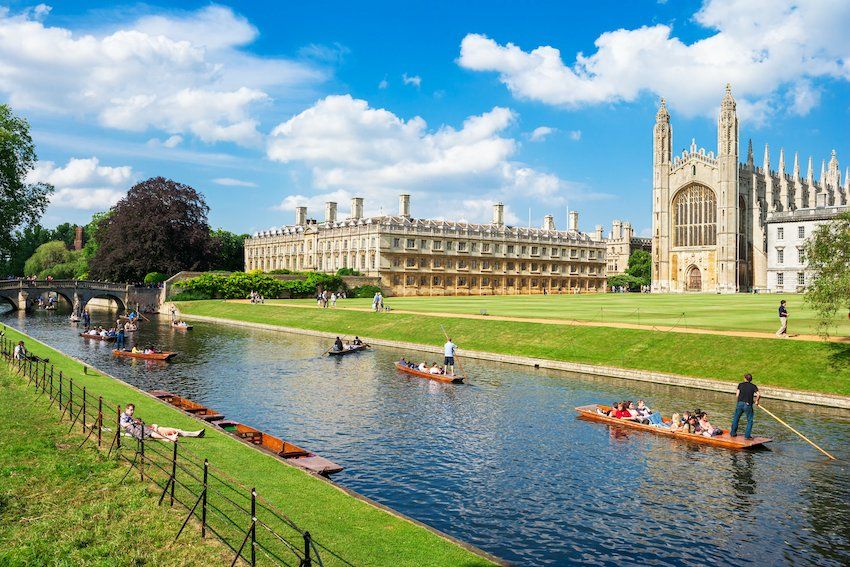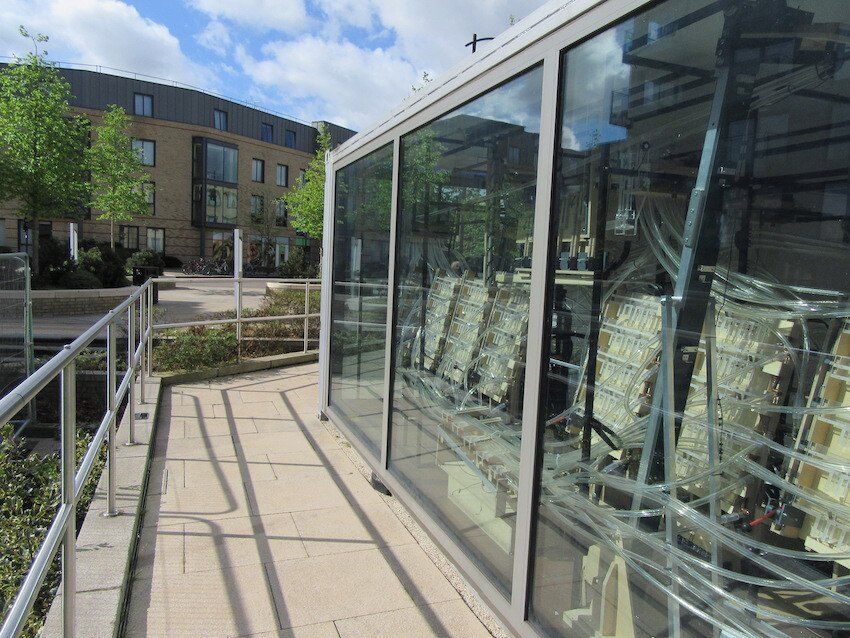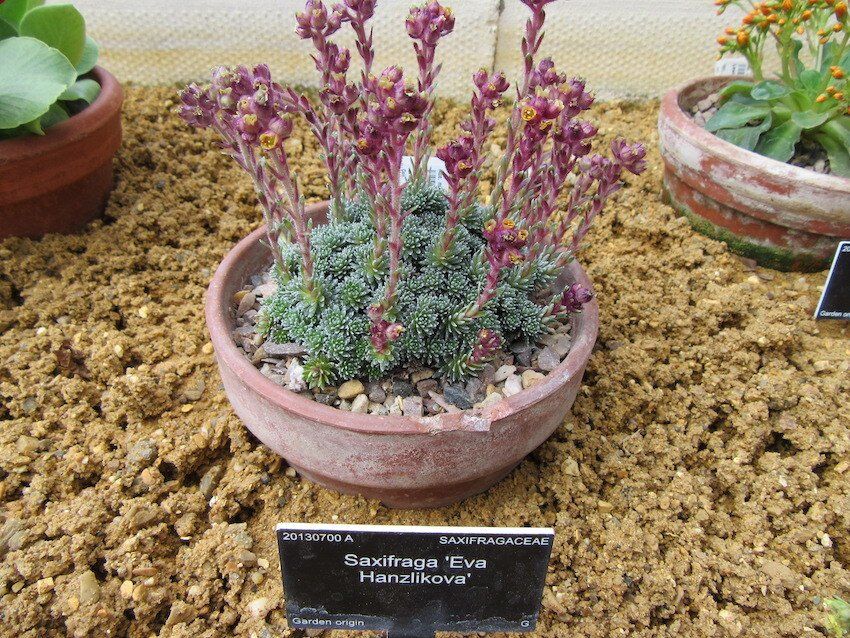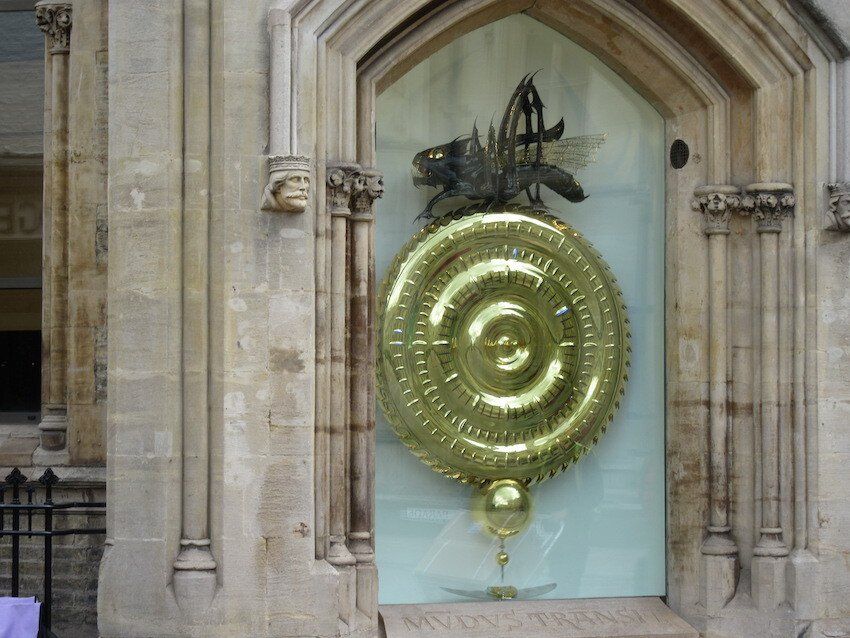
CAMBRIDGE
Take a visit to Cambridge sometime. It is about 50 miles north of London, just up the M11. Everyone must have surely heard of it. You will all know about the standard issue features; the colleges, the punts and the backs along with the historical architecture, the art, technology and the music. You will know of its academic prowess and its status as the principal world winner of Nobel Prizes. You will know too how Cambridge stands as an oasis of world academic and technical achievement amongst the murky primeval Fens that surround it.
There are additionally though, many less well known and obscure features that have emerged from the enigmatic Cambridge culture. Go and have a look sometime and take a glance at some of the cunningly unfamiliar City hallmarks. Cambridge presents a different view of life that can give all of us many of those ‘light bulb’ moments. And, by the way, the local Greene King beer is excellent. Positioned just in front of the central railway station and find the original ‘Supercomputer’. It is called a modern day ‘Sculpture of an Equation’ by its creator. It stands inside a glass box about the size of a public loo. It is a visible computer built of wooden cheese boxes and narrow transparent plastic pipes. Watch it in operation when it is switched on. The ball bearings flow around the system and solve your very own mathematical equation. It rattles and rumbles but works just in the same way as its most advanced cousins in the world. You can see it all happening in front of your eyes.
Right on the edge of Cambridge city, towards the North, track down Kettles Yard. You will find a charming row of terraced houses once owned by a distinguished University Professor. They have recently been renovated in very contemporary style and present art as it is rarely seen. Browse the walls and the video images and the ideas. They stand for leading edge up to date concepts to fascinate the imagination. Kettles Yard has been described as the most agreeable place to appreciate modern art forms in the country. Stand with your back to the railway station again and look straight ahead. At the top of the road, spot the soldier perching on the war memorial looking back at you. He is young, fit, athletic and optimistic. He symbolises the returning youth from a war contemplating what the new future may have in store for them.
A student of the time was especially selected by a Cambridge Don as the model. The Don had preferred his new life as a sculptor. He wanted to present the war ending in a victorious style with the prospect of new beginnings for everyone. The soldier looks towards the station trying to find his friends returning to their previous lives in their hometown. This youthful soldier, atop his high concrete plinth, rests just in front of the entrance to the Cambridge University Botanic Garden. Buy your ticket and take a slow stroll around it. Many of the plants and great trees cannot be found anywhere else in Britain. One or two of them nowhere else in the world. Find the Saxifraga family of rock plants in one of the greenhouses. Botanic scholars were recently given a new microscope. They have used it to discover that these Saxifraga plants support a chemical that is only found on other planets in the solar system, in the ear cavity of a certain breed of salmon and in their very own garden in Cambridge. It will ultimately be used to treat cancer sufferers. This substance can regulate the flow of treatment drugs into the system and make them much more effective.
There are actually two railway stations in Cambridge. There is a brand new one on the northern edge of town imaginatively titled ‘Cambridge North’. Nobody seems to work there except a few cleaners. Everything is done on a computer. It is the only unmanned station in Britain. The external building surfaces are completely covered by a pattern of seemingly random symbols that represent a system of computer programming and data. The pattern is called ‘The Game of Life’ and was created by Professor John Conway who taught at Gonville and Caius College. If you want a cup of coffee here, you have to ask the girl sitting on her old converted bicycle with the antiquated beverage machine just outside by the entrance door. Stop by the huge Corpus clock along King’s Parade. It is made of stainless steel and gold. It features, as part of the mechanism, a gigantic grasshopper that gobbles up time as it goes by. It is fascinating to watch. The inscription at the base translates as ‘The world is passing by along with its desires’.
To the west of the City along the Madingley Road lies the institute of astronomy. It is open to all comers on Wednesday evenings. Families with their children queue up to hear the weekly lecture concerning the more obscure features of astronomical science presented by University staff. Everyone can also survey the skies by peering through the large Northumberland Telescope. On really clear nights the concept of the ‘Big Bang’ will just come to life in the mind. The Scott Polar museum stands just behind the great spire of the Catholic Church in Lensfield road. It is free to go in. There are many exhibits from the great discovery expeditions of the Antarctic by Scott, Shackleton, Oates and others. The museum celebrates their adventurism and their intellect and their courage. There is much to wonder at and admire. There is even the very sleeping bag that Captain Oates vacated just before he announced ‘I am going outside and may be some time’.
The Eagle pub in Bene’t Street is a good spot for lunch. Take a look at the ‘RAF bar’ that has been preserved as a shrine to pilots from WW2. The ceiling remains encrusted with cigarette lighter and candle smoke ‘engravings’ left there by young fighter and bomber pilots during drunken evenings. Squadron numbers, personalities and fantasy impressions of the Landlord’s naked daughter are all still there, just as they were daubed in 1940. Settle down at the ‘DNA table’ with a good pint of ale. This is the place where Francis Crick and his associates had stood up and declared their discovery of DNA in 1950; the meaning of life. They had finally got to the bottom of all the research conducted in the Cavendish laboratory, just across the road in the opposite street. The breakthrough changed the world for us all. The old and great Eagle pub has a celebrated ghost as well. Look up and find the window outside on the first floor that must always, absolutely be left open.
Professor Steven Hawking, Fellow of Gonville and Ciaus College, was laid to rest a few years ago after his funeral service at Great St. Mary’s church in the centre of Cambridge. Professor Hawking was a theoretical physicist of world renown. He declared his ideas about the creation of the universe and other time and space issues that engulfed the world’s thinking and imagination. Hawking had to live with an appallingly debilitating disease for most of his life but made the most poignant contribution in his field whilst teaching at the University. Great St. Mary’s lies at the heart of spirituality in Cambridge.
These are just a very few of the ‘oddments’ to visit in Cambridge. There are many other great and strange things to observe in the City. The culture comes from a lateral thinking approach to life by the streams of intellects who have descended on Cambridge over the centuries. All of the past people have laid the pathways for the new. There is the scent of a unique culture everywhere in Cambridge. The City is full of youthful vigour, eagerness, imagination and achievement. Go and try it out for yourself.
Bob Lyons April 2022





